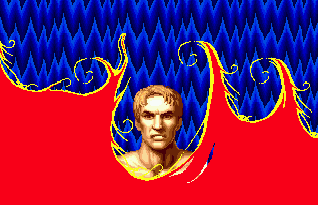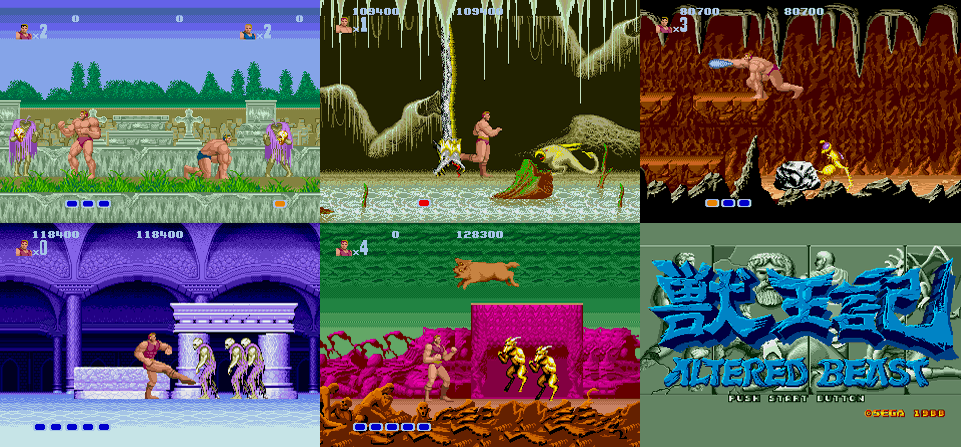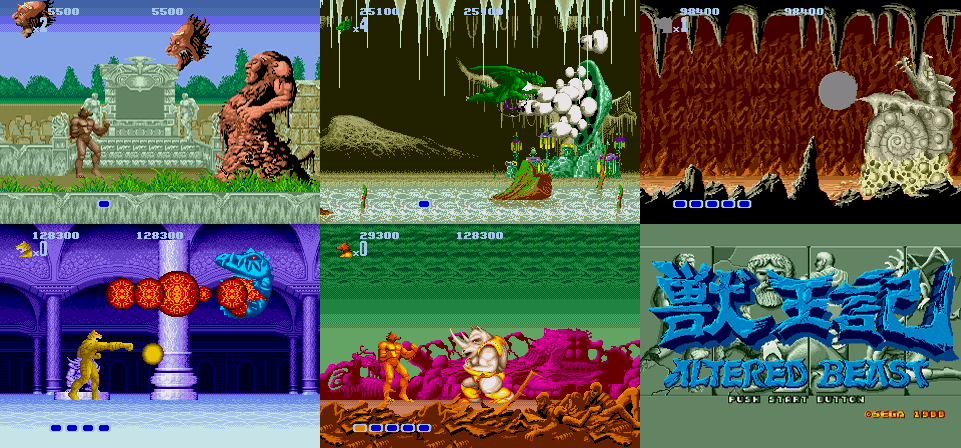Twenty years ago this month, Sega unleashed the Genesis upon an unsuspecting world. So great was its impact that lives were changed, marriages ended, and dogs and cats began living together. Ok, maybe it didn’t really happen that way. I guess I could be exaggerating. A more likely scenario was that Sega simply released its shiny new 16-bit console to a NES-crazed Japanese public and said “buy our console, please?” The country shrugged its shoulders with indifference and went back to playing Super Mario Bros 2.
 Yes, Japan would take some time to warm up to Sega’s new hardware (it one could even say that it ever did), and it wouldn’t be until the console was renamed and delivered to America that the company’s fortunes would change. The NES generation was growing up, and it was eager to move beyond mushrooms and Master Swords. The 8-bit hardware Nintendo steadfastly supported was beginning to show its age, and gamers were looking for more. Moreover, NEC was having a difficult time getting American audiences to embrace its newly rechristined TurboGrafx-16 with the same fervor that it had received in Japan. The time was right for a bold move, and Sega would step up to the plate, bringing its rich arcade heritage into the next generation (after doing a pretty darn good job with it on the Master System).
Yes, Japan would take some time to warm up to Sega’s new hardware (it one could even say that it ever did), and it wouldn’t be until the console was renamed and delivered to America that the company’s fortunes would change. The NES generation was growing up, and it was eager to move beyond mushrooms and Master Swords. The 8-bit hardware Nintendo steadfastly supported was beginning to show its age, and gamers were looking for more. Moreover, NEC was having a difficult time getting American audiences to embrace its newly rechristined TurboGrafx-16 with the same fervor that it had received in Japan. The time was right for a bold move, and Sega would step up to the plate, bringing its rich arcade heritage into the next generation (after doing a pretty darn good job with it on the Master System).
The 16-bit revolution in America started with one little title: Altered Beast.
Rise From Your Grave!
Who didn’t get shivers the first time they heard that? The voice was incredibly clear and loud, and it made clear a singular reality: gaming had just matured. Pack-in games were still standard in 1989, and the Genesis, bundled with Altered Beast, was a pretty sweet package. One must forget what is now common knowledge about the game – it’s brevity, repetitive gameplay and enemies. Those thoughts are fueled by hindsight and though they serve us well in the present, they have no place in the Double Dragon-infested arcades of the late ’80s. Repetitiveness was the business’ stock and trade then, one of the reasons why Street Fighter II knocked it on its ass in 1991. No, to understand and fully appreciate the importance Altered Beast had on home video games and the reasoning behind its pack-in status, one must look beyond the physical gameplay.
Click to see all the stages!
A lot of noise is made today about a console’s “tie-in ratio,” or the amount of software purchased with each system. Modern companies rely on AAA software from first and third party publishers to carry their platforms (with the exception of the Wii, which has reaffirmed how successful the pack-in practice really is). Previously, hardware manufacturers gave consumers a “free” title with their purchase. It seemed to be a win-win situation for everyone involved. The company nabbed a buyer who would hopefully go out and buy more games, and buyers got a “free” game with their new machine. The game didn’t necessarily have to be deep or exceptional in quality. It only had to show off what the hardware could do, making it the one piece of advertising every new owner was guaranteed to see.
Sega, like Nintendo, was undoubtedly going to include a game with its hardware. The trick was to give Genesis owners a taste of what the console could do, thus ensuring that they would run out and buy additional software. Nintendo had experienced great success with this strategy, deciding to package Super Mario Bros. with the NES, a move that was instrumental in that console’s success (as well as that of the game itself, which to date has sold over forty million copies). Altered Beast may not be in the same league as Super Mario Bros., but it had the desired effect. It set the groundwork for Sega, though it would take a certain blue hedgehog to finish the job two years later.
High Definition Graphics
To promote its fledgling Genesis, Sega needed a game that would entice prospective consumers with knockout visuals and sound but be simple enough as to not keep them from buying other software. Altered Beast filled that role brilliantly. The sprites were much larger than what 8-bit gamers were used to, and the colors and parallax scrolling screamed “arcade experience.” For a company banking its future on how well it could reproduce the arcade at home, Sega’s choice of Makoto Ushida’s side-scrolling beat-’em-up was a wise one. Only five levels meant that it was over quick, leaving gamers wanting more, and how were you supposed to get your fix? By going out and buying more Genesis cartridges, of course! No one at Sega believed that Altered Beast was supposed to be a killer app, otherwise it would have been sold on its own. No, its purpose was to entice freshly minted Genesis owners into buying more games, nothing more.
Click to see all the bosses!
That isn’t to say that the game is bad, necessarily. The two-player co-op is fun while it lasts, and the transformations are always cool to look at. The main problem with Altered Beast is that it’s just basically the same kicks and punches from start to finish, with little variation. Of all the launch titles, it was the one that most likely couldn’t stand on its own for sale, and bundling it with the Genesis was not only good marketing, it gave the game exposure that it might not have gotten otherwise.
These inherent flaws didn’t really have much weight on impressionable young gamers in 1989. They saw what seemed to be an incredibly accurate copy of one of the arcade’s hottest machines, and it was right there in the box with their new Genesis. Think of what it was like for a new Genesis owner to invite his NES-owning friends over for some gaming, and you can imagine the conversations (read: arguments) that must have taken place… and rightly so. Compare Altered Beast to anything else on the home market at the time, and the difference is markedly clear. The rich, detailed visuals were shockingly close to their arcade source material, though there were notable differences. Understandably, the flaws in the Genesis version, such as the butchered ending, weren’t really all that important to those who played it into the wee hours of the night. They were pretty excited at just how faithful a translation it had turned out to be. Later conversions, such as Golden Axe and Ghouls ‘n Ghosts, continued to foment the Genesis’ reputation of producing quality arcade ports, but it’s most likely that both games owe much of their sales to Altered Beast.
Shadow of the Beast
 Thinking back on it now, it’s amazing just how far arcade ports have come. Today, we take for granted that the home version of a game will be better than it was in the arcade, and the advancements in technology have all but ensured that those dark and loud havens where we spent our quarters will all but die out eventually. Before this became the standard however, gamers had to hope for as faithful a home conversion as possible, due to the limits of the hardware at the time. The Genesis made its early reputation by offering some of the best arcade ports available, and Altered Beast was the first game to truly show gamers that such a thing was possible.
Thinking back on it now, it’s amazing just how far arcade ports have come. Today, we take for granted that the home version of a game will be better than it was in the arcade, and the advancements in technology have all but ensured that those dark and loud havens where we spent our quarters will all but die out eventually. Before this became the standard however, gamers had to hope for as faithful a home conversion as possible, due to the limits of the hardware at the time. The Genesis made its early reputation by offering some of the best arcade ports available, and Altered Beast was the first game to truly show gamers that such a thing was possible.
One can argue about Altered Beast’s short, repetitive levels, and it’s easy to dismiss the game as something that has long been left behind to the annals of history. But looking back on this twentieth anniversary of our favorite little black box, it’s important to recognize the standard of overall quality that Altered Beast set, a standard to which Genesis gamers held every single arcade port that came after. That’s quite a legacy for a game with only five levels, don’t you think?



Recent Comments